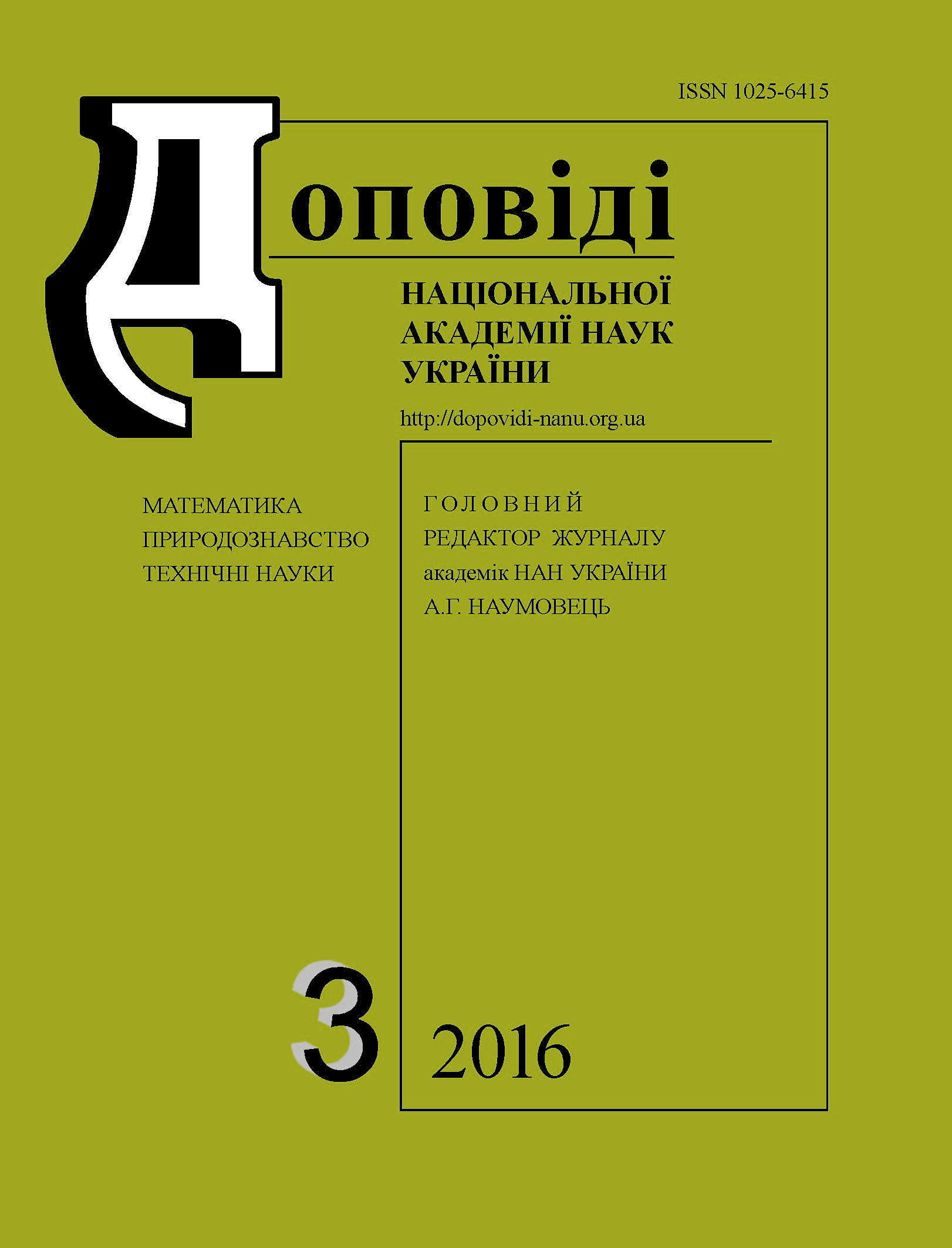Activation of a catalyst of the methanol synthesis by a mechanical effect
DOI:
https://doi.org/10.15407/dopovidi2016.03.086Keywords:
copper-zinc-alumina catalyst, heterogeneous catalysis, mechanochemical activation, methanol, synthesis gasAbstract
It is shown that the catalytic activity of a copper-zinc-alumina catalyst in the methanol synthesis can be increased by a mechanical activation in different ways — by the force of a mechanical displacement before catalytic reaction's beginning and by the force of a physical impact during the reaction. It is found that an addition of the effective weight of the catalyst is subjected to a mechanochemical activation in situ only. The performance of the catalyst comprising an effective additive is found to depend on the vibration frequency of a reactor with maximum at 5 Hz. The catalyst productivity (1.5 g CH3OH (gcat.· h)−1) obtained under conditions of activation in situ at a temperature of 220 ºC, pressure of 0.1 MPa, and vibration frequency of 5 Hz is twice as much as the results obtained under industrial conditions at 240 ºC and 9.0 MPa. The increase in the activity of the catalyst under the action of a mechanical load is interpreted by an increase of the concentration of lattice defects in the catalyst. It is noted that the method of mechanochemical activation of the catalyst in situ can be used as an alternative technology in the methanol production from a synthesis gas at high pressures.
Downloads
References
Heinicke G. Tribochemistry, Moskva: Mir, 1987 (in Russian).
Avvakumov E. G. Mechanical methods for activation of chemical processes, Novosibirsk: Nauka, 1986 (in Russian).
Boldyrev V. V. Russ. Chem. Rev., 2006, 75, No 3: 203–216 (in Russian). https://doi.org/10.1070/RC2006v075n03ABEH001205
Molchanov V. V., Bujanov R. A., Cybulja S. V. et al. Kinetics and Catalysis, 2004, 45, No 5: 724–733 (in Russian). https://doi.org/10.1023/B:KICA.0000044980.30041.4f
Baláž P., Achimovičová M., Baláž M. et al. Chem. Soc. Rev., 2013, 42: 7571–7637. https://doi.org/10.1039/c3cs35468g
Glikin M. A., Kutakova D. A., Prin' E. M., Glikina I. M., Volga A. I. Catalysis and petrochemistry, 2000, No 5–6: 92–100 (in Russian).
Khimach N.Yu., Polunkin Ye. V., Mel'nykova S. L. Chem. industry of Ukraine, 2015, No 2: 45–50 (in Ukrainian).
Rodin L. M., Ovsienko O. L., Kakichev L. P. Shem. Industry, 2001, No 10: 3–8 (in Russian).
Molchanov V. I., Selezneva O. G., Zhirnov E. N. Activation of minerals on grinding, Moskva: Nedra, 1988 (in Russian).
Behrens M., Studt F., Kasatkin I., K¨uhl S. Science, 2012, 336: 893–901. https://doi.org/10.1126/science.1219831
Downloads
Published
How to Cite
Issue
Section
License
Copyright (c) 2024 Reports of the National Academy of Sciences of Ukraine

This work is licensed under a Creative Commons Attribution-NonCommercial 4.0 International License.



